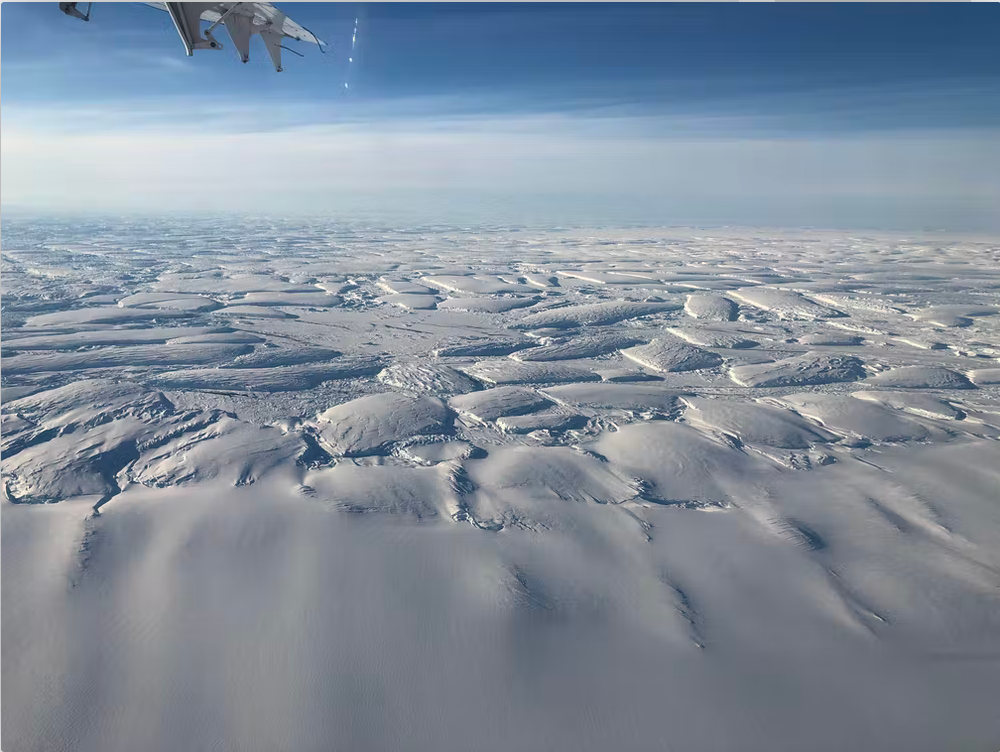Extreme precipitation events in Antarctica, which are mostly dominated by snowfall due to sub-zero temperatures, also include rainfall, according to new research.
BAS scientists studying atmospheric rivers – narrow bands of concentrated moisture in the atmosphere or "rivers in the sky" – have discovered that these phenomena bring not only snow but also rain to parts of Antarctica, even during the continent's cold winter months. The results are published today (11 February 2025) in the journal The Cryosphere.
Using cutting-edge regional climate models (RCMs) at a high spatial resolution of just one kilometre, the researchers explored how atmospheric rivers interact with Antarctica's rugged terrain to deliver significant precipitation to key areas, including the Thwaites and Pine Island Ice Shelves in West Antarctica. These are areas known for their ongoing retreat and contribution to global sea-level rise.
The study highlights the essential role of these kilometre-scale models in accurately assessing precipitation types and amounts in this climatically sensitive region.

The study reveals:
Rainfall in Antarctica: Simulations indicate that atmospheric rivers can produce several millimetres of rain, even in winter. Often, rainfall falls directly as supercooled drizzle-rain that remains liquid despite subfreezing temperatures.
Mountainous terrain: Topography is very important. Rain and snow are concentrated around steep slopes, where atmospheric rivers interact with the complex topography. Flow over the terrain produces supercooled drizzle and warms the ice surface via mountain winds known as foehn winds.
Resolution matters: The amount of simulated rainfall varied significantly with the model resolution, with 1 km simulations producing much higher rainfall estimates.
Snowfall measurements: Snowfall estimates from the RCMs matched observed snow height measurements on the Thwaites and Pine Island ice shelves more closely, whereas global reanalysis datasets like ERA5 underestimated snowfall amounts - sometimes considerably.
This study emphasises the need for more precise tools to understand precipitation patterns in Antarctica. Prolonged periods of rainfall over ice shelves can contribute to surface melting and ice destabilisation, accelerating the potential for ice loss. The findings also underline the urgent need for in situ observations of rainfall in Antarctica to validate and refine model predictions.
Study author Dr Ella Gilbert from the British Antarctic Survey (BAS) says:
"We pay a lot of attention to factors driving ice loss from big West Antarctic glaciers like Thwaites and Pine Island, but spend less time thinking about the one thing that mediates those losses - snowfall. Understanding how much snow and rain falls will help us better predict the future of these rapidly accelerating glaciers."
"Antarctica is a very cold place, but our findings show that rain can fall, even in these freezing conditions. While rainfall associated with extreme events has relatively minor consequences for ice shelf stability now, rain is a vital indicator of a warming climate and will become more important as temperatures rise."
"We show that the tools typically used to quantify the impacts and occurrence of atmospheric rivers in Antarctica - reanalyses - are at too coarse a resolution to fully capture rain, and therefore they may be underestimating their effects."
The research relied on three advanced regional climate models - the MetUM, Polar-WRF, and HCLIM - as well as reanalyses, in situ observations and satellite data, to evaluate the impacts of atmospheric rivers in the Amundsen Sea Embayment. These high-resolution simulations provide crucial insights into precipitation dynamics in this globally important area and underscore the limitations of existing reanalysis datasets.
Full citation: Gilbert, E., Pishniak, D., Torres, J. A., Orr, A., Maclennan, M., Wever, N., and Verro, K.: Extreme precipitation associated with atmospheric rivers over West Antarctic ice shelves: insights from kilometre-scale regional climate modelling, The Cryosphere, 19, 597-618, https://doi.org/10.5194/tc-19-597-2025, 2025.






